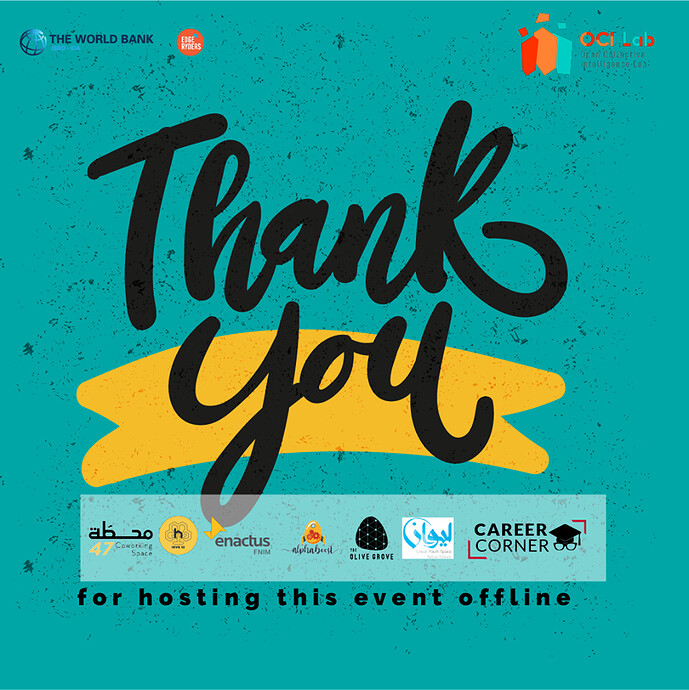On the 17th of February, OCI LAB incubator hosted the third webinar “Power Pitch and Storytelling,” ensured by @matteo_uguzzoni, an architect, game designer, and co-founder of urban games factory.
This webinar started at 5.00 PM CET and was moderated by @khouloud.ouesleti.
The webinar was aired in:
- Tunisia, at @Jamaity’s coworking space (Tunis), at Hive 12 (Sousse), at @Coworky (Nabeul) and at the National Engineering School (Monastir).
- Morocco, at Alphaboost
- Egypt, at the career corner, Al Ismailia
- Lebanon, at The olive Grove, Beirut, coordinated by @Mokhtaritani
- Jordan, at Liwan space, Amman, coordinated by @Mousamoamer
During the webinar, our mentor gave a detailed presentation illustrated by various examples and exercises on how to use the power of pitching and storytelling to conquer and retain the audience’s attention and move it to your desired action.
At first, he started by highlighting that presenting for the public is considered the biggest fear of our time. Mainly, it’s due to three primary reasons:
- No one taught us how to present.
- We don’t have to study our presentations since we would put the entire content in the slides makes it dull
- Having all the materials organized in slides can help grant something physical at the end of our presentation.
Then, he preceded the first exercise as introducing your projects in a sentence that doesn’t exceed 140 characters.
Next, he displayed the first main interest, which is the audience.
It’s the people/cluster to whom you would be presenting and pitching. It needs to be inquired by asking the following questions to create “ An audience map ”:
- Why are they here, or why would they read the handout? What motivates them?
- What are their problems? (Considering the presentation theme or his personal and professional life)
- What are their passions? What interests them?
- Is there something that they cannot stand?
- What are their expectations?
- Do they have some bias that I have to face immediately?
- What do I want them to do at the end of my presentation?
The answer to the first question represents the " Goal of your presentation ."
In fact, there are two types of presentations:
- Informative presentation: its role is to transfer direct messages
- Persuasive presentation: it aims to move the audience and motivate them to act upon a particular matter.
It is also essential to clarify the subject of your presentation, called the " Focus ," the main interest of the audience, that is highlighting the problem they want to solve.
That is how you will guarantee your audience’s attention.
As for the structure of the presentation, you ought to follow the following process:
- Opening: to attract the audience’s attention
- Exposing the problem
- Presenting a solution
- List of advantages
- Wrap up + Call to Action
Afterward, a video of Steve Jobs’s presentation, “Introducing iPhone at MacWorld 2007,” was screened to illustrate the structure of his pitch.
The handout design process:
- It would be best if you start by writing all of the content in a word file; it saves time.
- Conceive a simple slide with empty slides, images, and no bullet points.
- Make sure to dedicate one slide for each concept
- Avoid using typical tacky images to demonstrate your point.
In conclusion, make sure to remember:
-
You are presenting for an audience, your key-player, try to understand who they are!
-
Define what you want from your audience and make an explicit call to action at the end of the presentation.
-
If you want your audience’s attention, involve them and find their problem, that’s the starting point to convince them of your solution.
-
Slides (in a live presentation) must be simple!
-
Handout and live presentation are different communication processes, they work differently, and they need different approaches.
